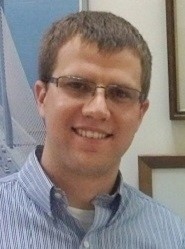Bright Spark Lectures
| Bright Spark Lecture 2 | Influence of Spatially Variable Soil Permeability on Backward Erosion Piping |
| Date / Time | 13 December 2019, Friday / 16:30 - 18:00 hrs |
| Venue | Room IB-101 |
| Speaker | Bryant Robbins U.S. Army Corps of Engineers, USA |
Biography

Bryant began , working as a research geotechnical engineer in the Geotechnical and Structures Laboratory (GSL) of the U.S. Engineer Research and Development Center in 2010. While at GSL, his work has focused exclusively on geotechnical and hydraulic failure modes of embankment dams and levees. He has worked on site characterization studies, embankment stability and seepage analysis, geotechnical laboratory testing, centrifuge modeling of embankments, laboratory and field erosion tests, and feasibility studies for various dam and levee modifications. His expertise includes both physical and numerical geotechnical modeling. He has designed and constructed numerous unique physical model studies, including hardware and software development for data acquisition needs. In more recent years, he has developed custom finite element modeling programs for simulating erosion through dam and levee foundations. Bryant obtained his BS and MS Degrees in Civil Engineering from Montana State University and Mississippi State University, respectively, and is pursuing his PhD in Civil Engineering at Colorado School ofMines. He currently serves on the executive board of the Geotechnical Safety Network and is a memberof the ASCE, ASTM, ISSMGE, U.S. Society on Dams, and Association of State Dam Safety Officials.
Abstract
Backward erosion piping (BEP) is a failure mechanism of serious concern for both dams and levees. Finite element models have been developed for analysis of BEP; however, these models often assume foundation soils are entirely homogenous. Recent laboratory investigations have demonstrated that spatial variability in soil substantially affects the BEP process, typically resulting in increased resistance to BEP. This lecture presents a numerical investigation of the influence of spatial variation in permeability on BEP. A two-dimensional finite element model was developed for conducting plan view analyses of BEP in random permeability fields. Analyses results indicate that the probability of erosion progression is related to both the variance and correlation length of the permeability random field. BEP progression becomes less likely as the variance in permeability increases and the correlation length in the direction of flow decreases.

